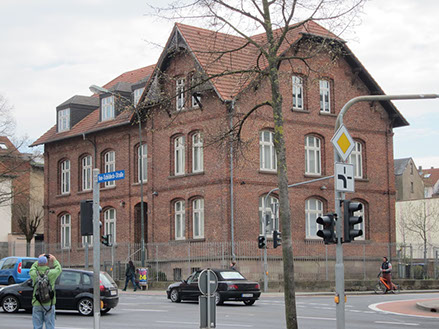 Jews are first mentioned there in 1235, when 34 were burned to death following a blood libel. Frederick II (Holy Roman Emporer) refuted the charge in 1236. In 1301 King Albert I pledged the taxes of the Jews of the diocese to the Abbot of Fulda. in 1310 Henry VII transferred full authority over them to the Abbot. In 1349 they fell victim to the black death persecutions. By the 16th century Fulda became the seat of a Rabbinate which extended its jurisdiction over the entire region. In 1603 Fulda was made the seat of one of the five Jewish district courts in Germany with a distinguished yeshivah.
Jews are first mentioned there in 1235, when 34 were burned to death following a blood libel. Frederick II (Holy Roman Emporer) refuted the charge in 1236. In 1301 King Albert I pledged the taxes of the Jews of the diocese to the Abbot of Fulda. in 1310 Henry VII transferred full authority over them to the Abbot. In 1349 they fell victim to the black death persecutions. By the 16th century Fulda became the seat of a Rabbinate which extended its jurisdiction over the entire region. In 1603 Fulda was made the seat of one of the five Jewish district courts in Germany with a distinguished yeshivah.
Many Jews of Fulda dealt in wine-retailing which was opposed by Christian citizens. Regulations restricting Jewish trade were issued in 1699, 1739, 1788, and 1792. There were 75 Jewish families living in Fulda in 1633 (compared with 292 Christian households). The whole community, apart from five families, was expelled in 1677. By 1708 their number had increased to 19 taxpayers. The Jewish community had a well, and owned houses, homesteads, and stables (first mentioned in 1367); by 1740 some lived outside this area. The synagogue and bath house were located on the "Jews' Hill" near the community's hospital, and the cemetery in a suburb. A Jewish school was established in 1784. This was one of the first Jewish schools in Germany, and eventually the last to be liquidated by the Nazis.
The community numbered 321 in 1860; 675 in 1905; 957 in 1913 (4.26% of the total population); and 1,137 in 1925 (4.44%). Under its Rabbi, Michael Cahn (1849-1919), Fulda was a center of orthodoxy.
In 1933, when the Nazis came to power, there were 1,058 Jews living in Fulda (3.8% of its total population). The yeshivah remained open until 1939. The synagogue was set on fire in November 10, 1938 (Kristallnacht), and in 1940 the cemetery was destroyed. 415 Jews remained in Fulda on May 17, 1939, 131 of those unable to leave were deported to Riga on December 12, 1941, and an additional 122 in 1942 to Theresienstadt and unknown destinations in the east.
In 1945, survivors who returned from the camps established a new community. They turned the Jewish cemetery into a paved court yard, as a protest against the desecration of Jewish graves. On feast days, they held their prayers at the building of the old school. in the years 1948-1950 most of the Jews left the place. In 1968 there were 40 Jews in the community of Fulda, 10 of them children.
in the 1980’s the Mayor of Fulda, Dr. Wolfgang Hamburger, initiated renovation works of the old school building, to turn it into a Jewish cultural center. The synagogue was also in the building. The center was officially opened in 1987 and since then it has been the center of Jewish life in Fulda.
Since 1988 Fulda Jews and their descendants from all over the world have been holding an annual gathering there. Following the unification of west and east Germany, Jews from the Soviet Union came to Fulda and the community grew to 300. The cemetery courtyard was named “Jerusalem Square” and in January 1988 a study day in memory of the holocaust was held there, in which both Jews and Christians participated. a memorial service was also held, as well as a public prayer service, at a church nearby.
(From Beit Hatfutsot - Museum of the Jewish People)
Recommended reading -Return to Fulda
Family Contingent Return to Fulda
In 2013 family members including Fred and Ann Abeles, Peter and Jonnet Abeles, Sharon and Doni Hess, Hans Bloemendal, Eva and Harry Lecerof traveled to Fulda and visit their and our ancestral homes
Photographs courtesy of Ann and Fred Abeles
Fulda
The former Jewish school is now a synagogue and community center on von Schildeckstrasse.
© 2016 DreifussBros.com
Contact Us for password information or for Comments
Web Master: Pete Dreifuss - Date of last revision 17 Jan 2022
